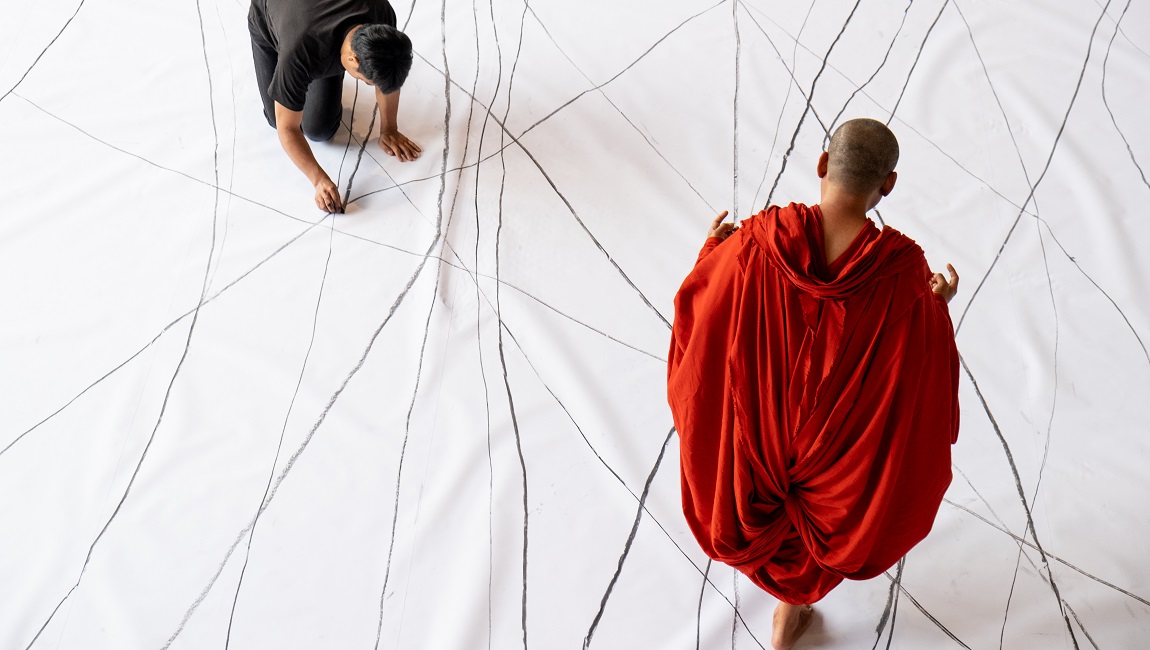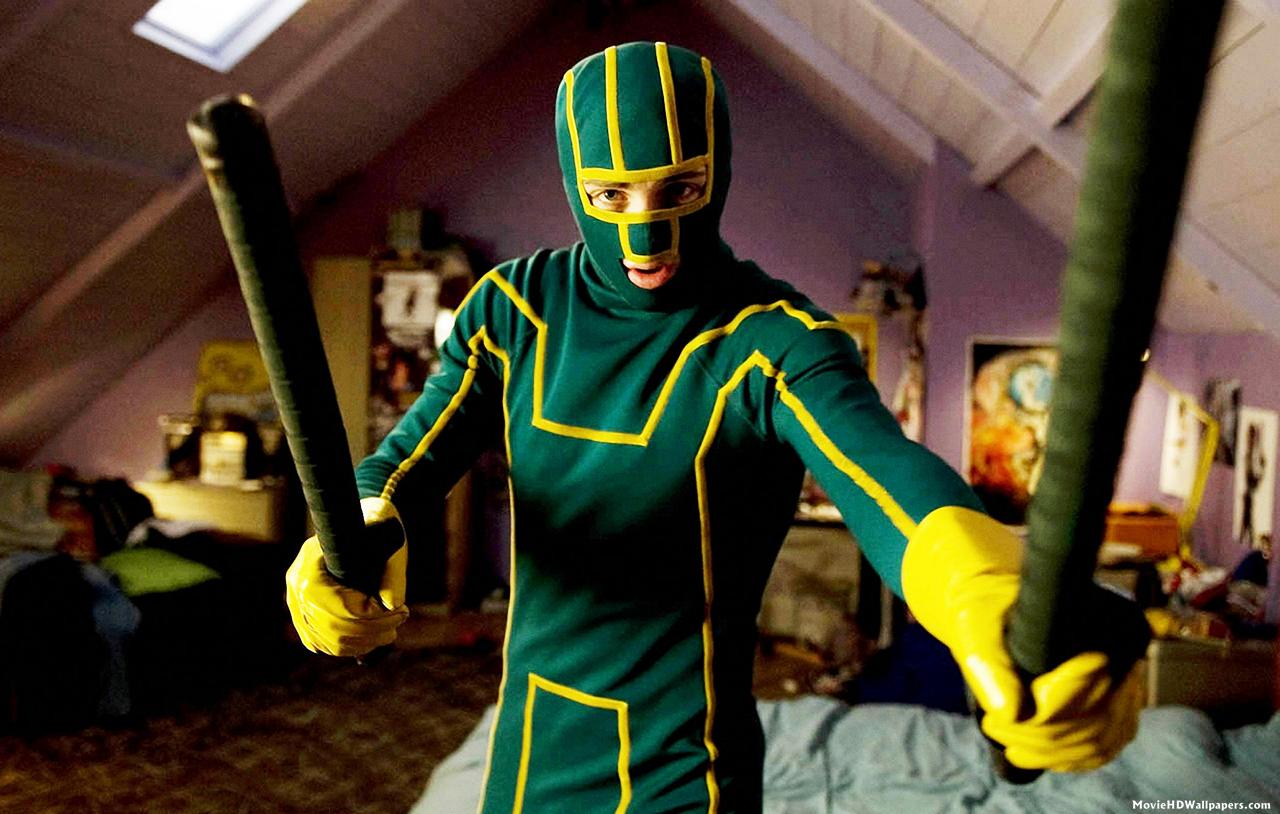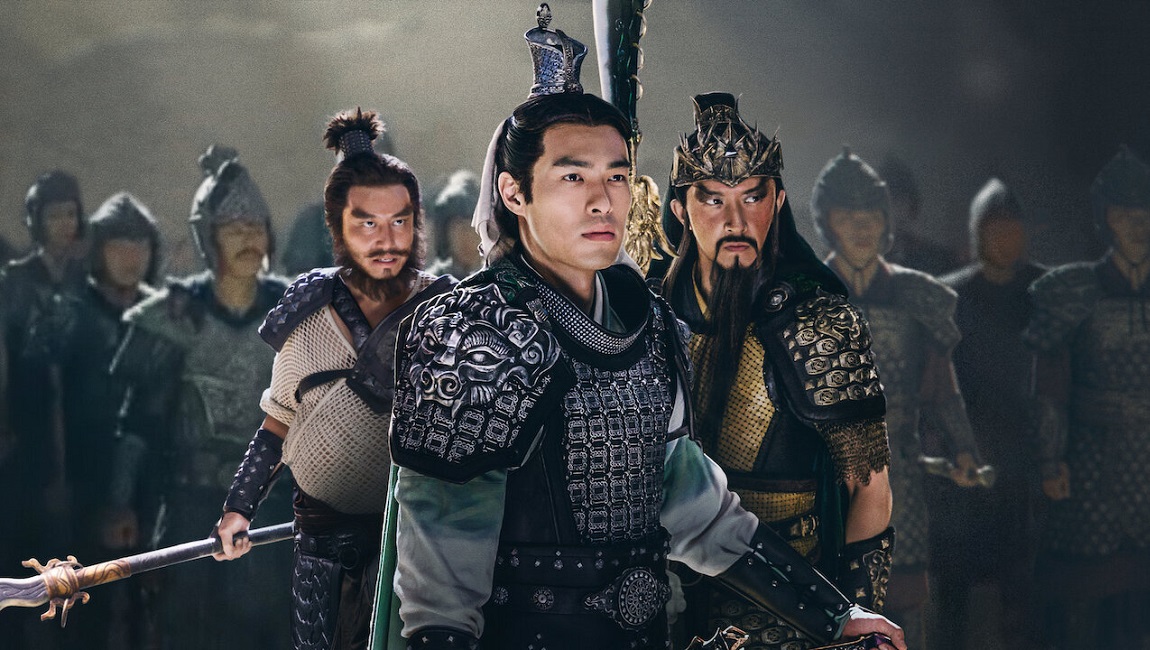One of the more delightful, long-running series in contemporary cinema is Tsai Ming-liang’s Walker films, wherein actor Lee Kang-sheng — dressed in flowing red Buddhist robes — walks very, very, very slowly through the major cities of the world. Now into his second decade of walking, “The Monk” has been to Hong Kong, Tokyo, and now Paris. In one film, he discovered the Monkey King (Denis Levant) and continued on his journey to the West to retrieve sacred scriptures. In another, he stopped to eat a delicious-looking sandwich or bun of some type. And now in Where, he finds himself making his way to an art museum, where he encounters a Thai man played by Anong Houngheuangsy, star of Tsai’s most recent feature, Days.
Anong, in fact, opens the film. We spend the first ten minutes of the movie with him in his home, humming along to himself as first he takes a shower and then performs an elaborate and lengthy facial skincare routine. Only then do we cut to the outside world, where the Monk is making his way through the sidewalks of Paris. These opening shots are full of Tsai’s sly humor in composition and editing. One shot gives a nod to the Stonewall Inn. Another opens with the Monk nowhere in sight, only for a car to drive away suddenly revealing his presence (followed by me hooting and hollering: “There’s my guy! Walkin’ slow! Get there buddy!”) One shot, filmed from across a busy street such that vehicle traffic is constantly interrupting our view, match cuts from one passing truck to another, revealing a new, closer shot of the Monk. The match on motion gives the impression of a wipe, which is then combined with an axial cut, a combination I can’t recall ever having seen before. One long shot watches the Monk pass along the sidewalk from just off the right-hand edge of the screen all the way to just off the left side. Most of our interest in the shot is on the passersby who stop to look at him. Some gawking, some taking pictures, some giving him a sidelong glance and continuing on their way. The punctuation comes from a dog, who exits the screen where the Monk entered it, but not before stopping to urinate on the pavement.
One sequence finds the Monk visible only in reflection (The world is an illusion! Free yourself buddy!), and then from behind a metal mesh screen. A reverse shot frees him: he’s now in the open space in front of the screen, followed by a shot that frames him walking across a vast courtyard, while visible in the distance are dozens, if not hundreds, of people trapped in plastic tubes, riding escalators and walking up stairs to some kind of large building (it’s the Centre Pompidou), like so many gerbils in a maze, or possibly morsels of nutrients traveling the intestines of Institutional Art. This leads to maybe the most suspenseful shot in any Walker film to date, as the Monk enters the museum via a freight elevator. A low-angled shot introduces deep red walls (matching the Monk’s robes), one of which loudly opens, revealing a massive steel elevator door. The Monk is inside the elevator, slowly making his way to the exit. Will he get there in time, or will the automated machinery crush him? (He survives.) Inside the museum, we see him walk past a large Cubist painting, what looks like a sidewalk scene of buildings and pedestrians looking at things from contradictory perspectives simultaneously — the kind of thing to think about on a long walk and finally encounter Anong, at long last. Throughout the film, shots of the Monk on the street have been interspersed with Anong. We watch him wander around the town, though mostly we see him standing or sitting: looking at his phone, listening to music, eating a sandwich. He looks bored, a little bit lost. Like he’s waiting for someone or something, or he simply doesn’t have anything to do in an unfamiliar city and is just killing time (aren’t we all, even the Monk?).
In the museum, we’re introduced to a very large piece of white canvas, or some other kind of fabric, lying on the floor of an otherwise empty lobby. It’s the one shot in the film that doesn’t have either the Monk or Anong (at least, they don’t seem to be visible, even after looking very closely). The next shot, though, shows Anong drawing lines across the canvas with charcoal. Dozens of uneven, shaky, curving, or wobbly lines run the length of the material, like a complex system of rivers (or wrinkles). Inevitably, the Monk enters and begins walking across it as well, not following any of the lines, neither man acknowledging the other. And then a shocking cut sends us back to Anong’s home, with an extreme close-up of his facial pores (seen through the green goop he applied in the film’s second shot). Is everything we’ve just seen a dream? Once again: the world is an illusion.
The next day (if a day has indeed passed), the Monk is back on the road, continuing his journey through Paris. Anong, wearing a different outfit (white where before he was in almost all black), walks by him and then, a few minutes later, returns to watch him again (a shocking moment when we realize Anong has come back: he sneaks in behind some passersby and is suddenly there in the heart of the image). A striking composition centers on Anong’s face as the Monk’s head (slowly) passes in front of him. His big eyes are fascinating, registering confusion, recognition, sadness, longing. The Monk continues on into the crowd. We don’t know where they’re going.
Published as part of InRO Weekly — Volume 1, Issue 18.







